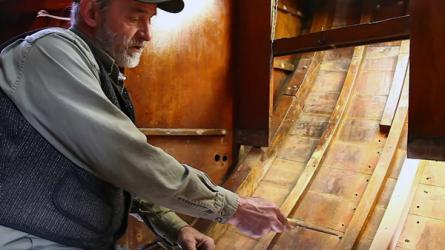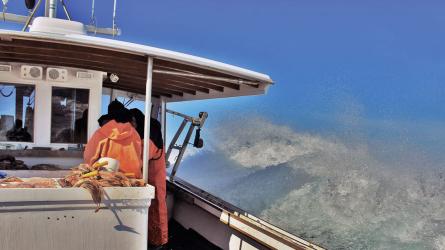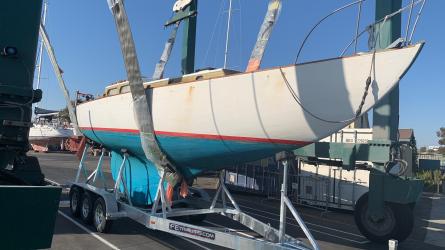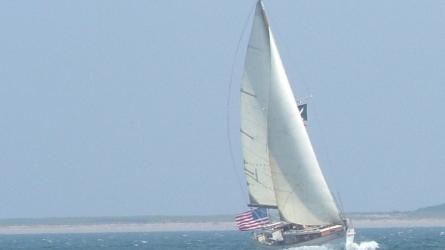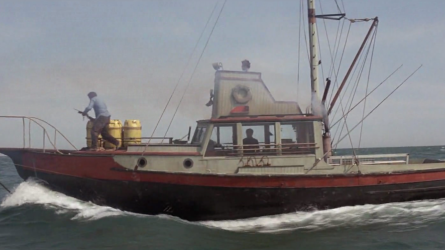September / October 2023
Elmer Collemer
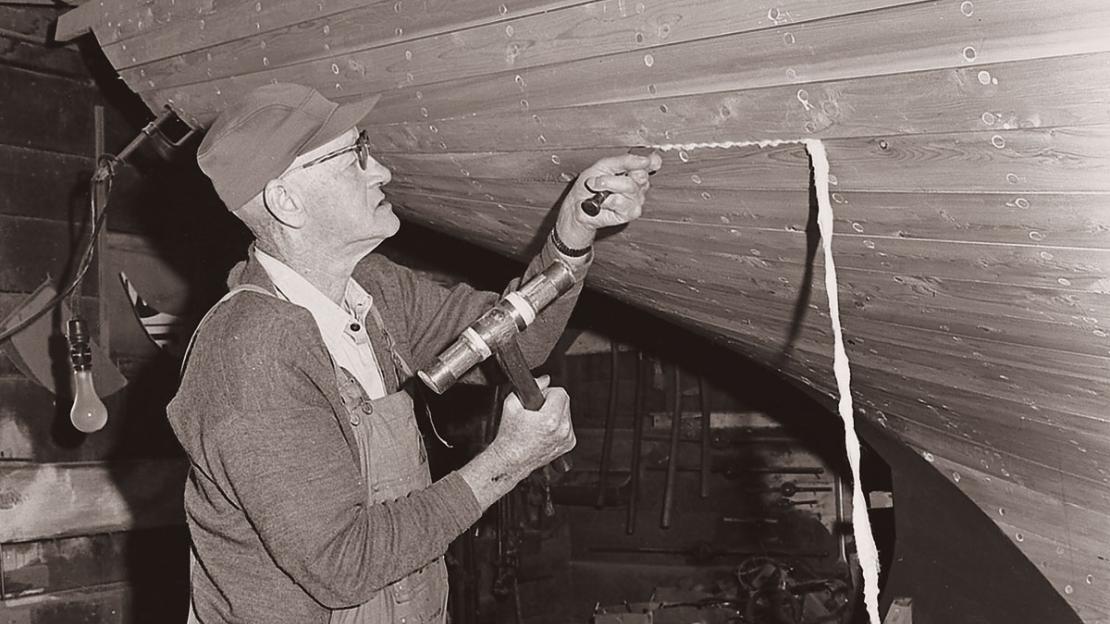
PENOBSCOT MARINE MUSEUM
Working mostly alone in a barn in Camden, Maine, the boatbuilder Elmer Collemer turned out a remarkable fleet of small wooden yachts over the course of two decades, beginning in 1948. Many of his boats are still sailing.
Frank Elmer Collemer, known to all as “Elmer,” was a Camden, Maine, boatbuilding legend. He usually worked by himself, in a barn, and built at least 20 substantial sailboats between 1948 and 1968. He also built a few yawlboats, including a diesel-powered 16-footer for Capt. Jim Sharp to use with his 121' Gloucester fishing schooner ADVENTURE, which had recently been converted for carrying passengers. Collemer was respected as a great craftsman with a masterful understanding of traditional lines, and his boats typically reflected the lines and clipper bows of 28–38' Friendship sloops.
Collemer was born in Lincolnville, Maine, on September 12, 1904, the son of farmer Frank Knight Collemer and Ethel Maud Everett Collemer. He learned his trade in shipyards in Maine and Rhode Island. He lived with his family in Lincolnville until he married Merle M. Garland in June 1929 and moved to Camden; they separated in the 1940s. He began building boats on his own in Camden after World War II and in 1949 purchased a barn where he worked for the rest of his life.
Collemer was a tall man who probably weighed about 200 lbs. One of his eyelids drooped a bit, and over the years he had lost fingers to saw blades. He could be crotchety, but children accompanying his customers remember him as patient, gentle, and likable. George Jennings III, who worked for Collemer in the early-to-mid-1960s while in high school, recalls Collemer as a good teacher—concerned and easygoing. Jennings’s primary tasks were chiseling off bungs and sanding for hours, using sandpaper properly folded and well used-up. He described Collemer’s boatshed as having many hand tools, a couple of marine engines in a corner, dry cedar boards stickered for future planking, shelves of fittings, bronze hardware, rolls of cotton caulking, kegs of nails, coils of line, old sails, big power tools, a steambox, and a big woodstove in a corner near his large roll-top desk. Jennings also recalls that Collemer walked daily the short distance to downtown Camden for an ice cream sundae at Libby’s Drugstore and Pharmacy, at about the time high school students arrived there.
The yacht designer Tom MacNaughton remembers Collemer as a quiet, modest man confident in his craftsmanship and artistic abilities. “It was said about Elmer that every boat he built was a masterpiece and each one was a greater work of art than the one before it,” MacNaughton said. “His fierce dedication to his craft can be illustrated by the fact that after working long hours in his shop he would go home to his lodgings, and, to relax from boatbuilding, he would build sailing models to test out his ideas and understanding of performance.” Occasionally, when the MacNaughton family sailed or drove to Camden to visit Collemer, they would find him and the naval architect Malcolm Brewer sailing their models in Camden’s inner harbor to test out their theories. This was their version of tank-testing.
To read the rest of this article:
Click the button below to log into your Digital Issue Access account.
No digital access? Subscribe or upgrade to a WoodenBoat Digital Subscription and finish reading this article as well as every article we have published for the past 50-years.
ACCESS TO EXPERIENCE
Subscribe Today
1 YEAR SUBSCRIPTION (6 ISSUES)
PLUS ACCESS TO MORE THAN 300 DIGITAL BACK ISSUES
DIGITAL $29.00
PRINT+DIGITAL $42.95
Subscribe
To read articles from previous issues, you can purchase the issue at The WoodenBoat Store link below.
 Purchase this issue from
Purchase this issue from




